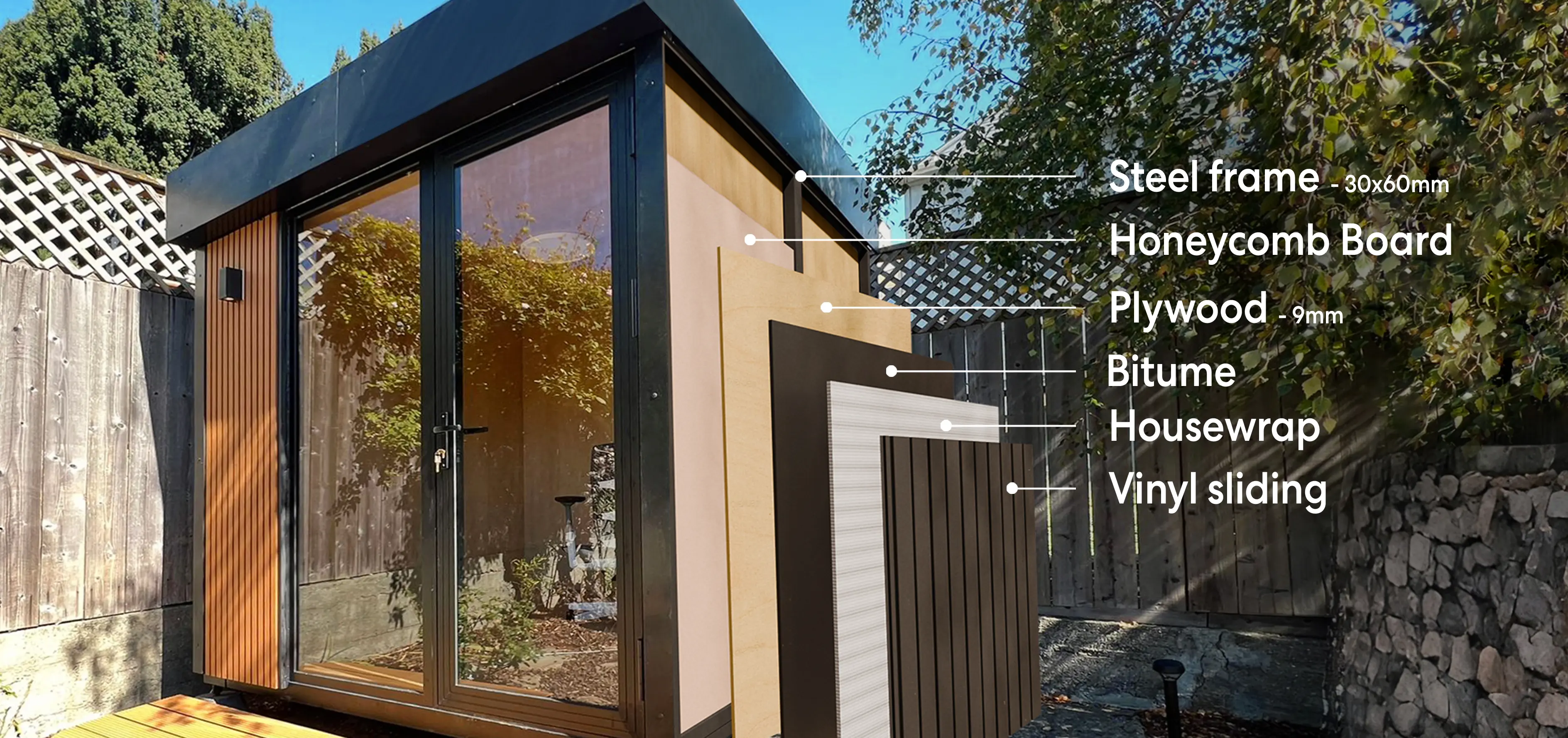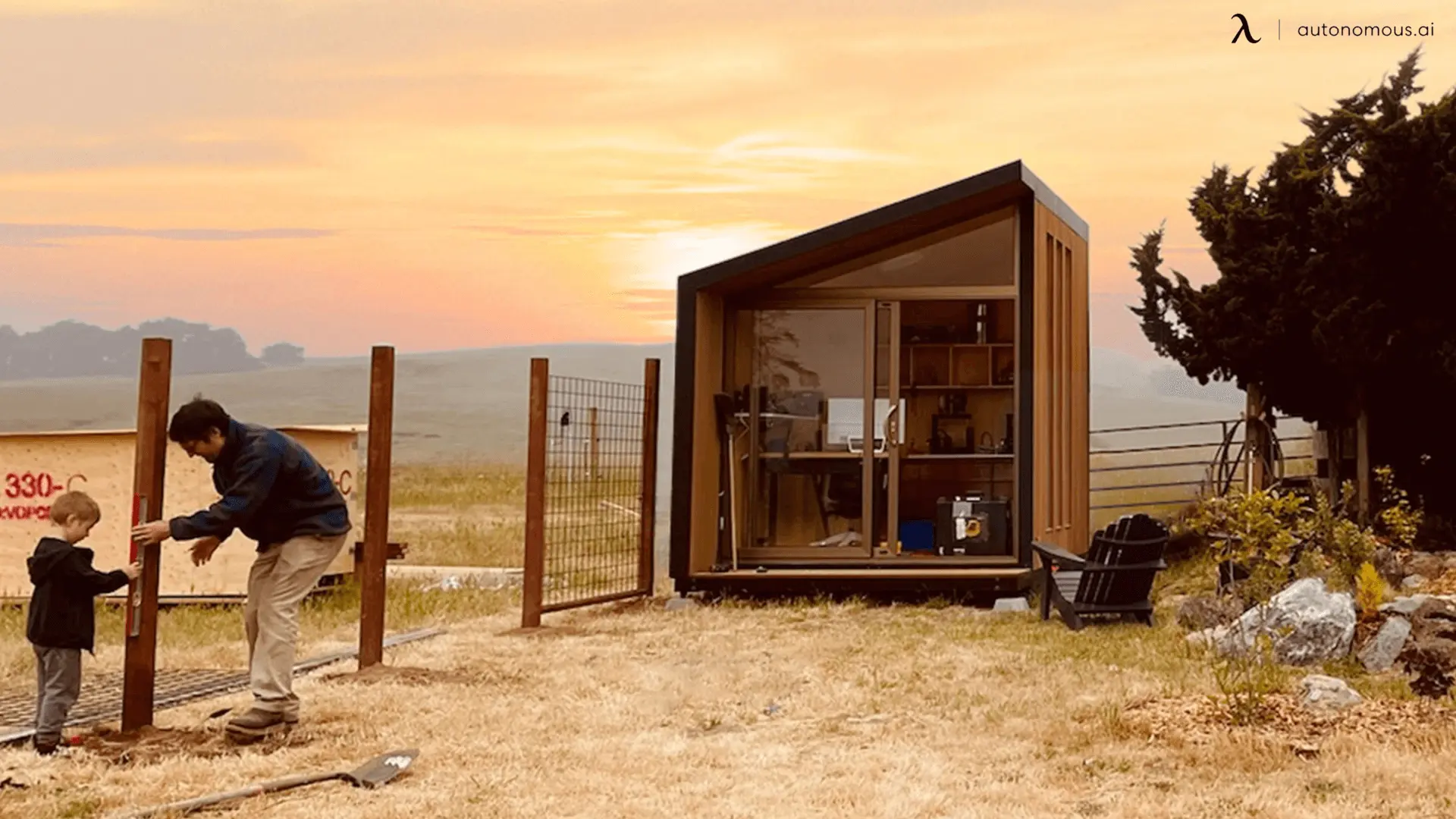
Guide to ADU Electrical Requirements in California
Table of Contents
The surge in demand for ADU meaning Accessory Dwelling Units, colloquially known as secondary units, in California reflects the state's response to the growing need for additional income streams for homeowners. However, constructing a prefab ADU in California entails navigating a maze of regulatory requirements, particularly concerning electrical systems.
In this guide, we'll delve into the intricacies of ADU electrical requirements and the cost of ADU in California, offering insights and strategies for a successful ADU project.
1. Understanding ADU Electrical Requirements in California
While ADUs offer numerous benefits, including additional housing options and potential rental income, ensuring compliance with specific electrical standards is paramount to guaranteeing safety, efficiency, and legal adherence.
In California, ADU electrical requirements are governed by a combination of state and local regulations, with the California Electrical Code and Title 24 building codes serving as primary reference points.
These standards encompass various aspects, including:
1.1. Wiring
This includes laying down electrical cables, connecting outlets, switches, and fixtures, and ensuring proper wiring routing to facilitate electricity flow throughout the space. Proper wiring is crucial for ensuring the safe and reliable operation of electrical appliances and lighting fixtures within the prefab ADU in California.

1.2. Safety Protocols
Safety protocols in ADU electrical requirements in California include adhering to building codes and regulations governing electrical installations, such as proper grounding of electrical components, installation of circuit breakers and surge protectors, and compliance with fire safety standards.
1.3. Utility Connections
Utility connections pertain to the integration of essential services such as electricity, water, and gas into the ADU. This involves coordinating with utility companies to establish connections and meters for each utility service. Proper utility connections ensure that the ADU has access to essential resources for comfortable living, such as power for lighting and appliances, water for sanitation and hygiene, and gas for heating and cooking.
1.4. Essential Electrical Components
Critical to the safety and efficiency of an ADU's electrical system is the proper installation of essential components like circuit breakers, switches, outlets, and light fixtures. Adherence to the California Electrical Code and safety protocols mitigates risks associated with electric shocks and malfunctions.
Additionally, wiring fixtures must comply with safety standards, ensuring grounding and suitable breaker installations.
2. Key Title 24 Requirements for ADUs
Title 24 mandates various requirements for ADUs, ranging from the installation of whole-house fans and electric heat pump water heaters to minimum solar requirements and insulation standards. These provisions aim to enhance energy efficiency, reduce greenhouse gas emissions, and improve overall building sustainability, keeping in mind the California ADU size limit.
Moreover, HERS testing is essential for assessing ADU energy performance and ensuring compliance with Title 24 standards.
3. Navigating Title 24 Compliance
Understanding compliance methods, such as the Prescriptive and Performance Methods, aids in effectively achieving Title 24 standards and low ADU electrical costs.
- Prescriptive Method
In the Prescriptive Method, compliance with Title 24 regulations involves meeting specific minimum requirements for individual building components. These requirements are predetermined and outlined in detail in the building code. For example, the method may dictate the maximum allowable window area or specify the insulation R-values for walls and ceilings.
While the Prescriptive Method offers simplicity and clarity in terms of compliance, it may lack flexibility compared to alternative approaches. However, it provides a straightforward path to meeting regulatory standards, especially for smaller projects with straightforward designs.
- Performance Method
Conversely, the Performance Method offers greater flexibility and customization in achieving Title 24 compliance. Instead of adhering to preset requirements for individual components, this method evaluates the overall energy performance of the building as a whole. Energy modeling software calculates the building's energy budget, considering factors such as insulation levels, HVAC efficiency, and renewable energy usage. By analyzing trade-offs between different energy-saving measures, designers can optimize the building's energy performance while meeting or exceeding regulatory standards.
4. Main Strategies for Meeting Title 24 Standards
- Utilizing Energy-Efficient Appliances and Lighting
Opting for appliances and lighting fixtures with high energy ratings reduces electricity consumption, leading to lower operating costs and environmental impact while ensuring occupant comfort and convenience. Energy-efficient appliances incorporate advanced technologies to minimize energy waste and maximize performance, making them ideal choices for California modular homes.
- Improving Building Envelope and Insulation
Improving these elements reduces heat transmission, increases thermal comfort, and boosts energy efficiency, which lowers energy costs and the amount of energy needed for heating and cooling. The total energy performance of ADUs may be greatly enhanced by upgrading the windows and insulation to meet or surpass Title 24 requirements, assuring tenant affordability and comfort.
- Integrating Renewable Energy Sources
By utilizing clean, renewable energy, solar panels and whole-house fans help achieve sustainability goals by lowering dependency on fossil fuels and carbon footprint. In order to further improve energy efficiency and environmental sustainability, whole-house fans encourage natural ventilation and cooling, while solar panels collect sunlight and transform it into power.
- Consulting with Experienced Professionals
Seeking guidance from ADU construction experts and Title 24 compliance specialists ensures the implementation of effective energy-saving strategies tailored to project requirements and budget constraints, optimizing outcomes and regulatory compliance. Experienced professionals offer valuable insights into energy-efficient design principles, construction techniques, and renewable energy solutions, empowering homeowners to make informed decisions and achieve their ADU goals.
- Conducting Energy Assessments
Performing energy assessments helps identify areas for improvement and prioritize energy-saving measures. This enables informed decision-making and maximizes energy efficiency gains while minimizing environmental impact and operating costs. Energy assessments involve evaluating the energy performance of prefab ADUs through comprehensive audits, simulations, and analysis, providing homeowners with actionable recommendations to enhance energy efficiency and comfort.
.webp)
5. Simplify with WorkPod Solar
Meeting Title 24 standards for ADUs can be challenging, especially when incorporating renewable energy sources. The WorkPod Solar offers a streamlined solution, combining modern design with pre-installed solar technology to help you easily comply with California’s energy efficiency requirements.
Why Choose WorkPod Solar for Title 24 Compliance?
- Built-In Solar System: WorkPod Solar comes equipped with solar panels, an inverter, and a 10.2kWh battery, providing an all-in-one renewable energy source that meets and exceeds Title 24 standards.
- Energy Efficiency Made Simple: With thermal insulation and soundproofing, the unit minimizes energy waste while maintaining a comfortable interior environment.
- Plug-and-Play Design: No need for complex utility connections—just set it up, and you’re ready to go off-grid or connect to existing utilities.
- Regulation-Friendly: At 102 sq. ft., the WorkPod Solar’s design helps bypass many traditional permitting hurdles while aligning with energy code requirements.
Perfect for Modern ADUs
For homeowners or builders navigating California’s strict energy standards, WorkPod Solar offers a sustainable and hassle-free alternative to traditional ADU construction. It’s an innovative way to meet Title 24 requirements while enjoying long-term cost savings. Whether you're looking for an outdoor office in California or a prefab home office, WorkPod Solar provides an energy-efficient solution that minimizes the need for complex electrical upgrades.
6. Future-Proofing Your ADU for Energy Efficiency
Building an energy-efficient ADU is not just about meeting today’s standards—it’s about preparing for the future. With California’s push toward sustainability, homeowners can integrate smart energy solutions to reduce long-term costs and enhance livability. Here’s how to future-proof your ADU for energy efficiency.
Prioritize Solar Power Integration
California’s energy policies are evolving, making solar power a key investment for ADUs. Whether you’re installing a solar panel system or supplementing with energy-efficient solar devices, these upgrades can lower utility bills and increase self-sufficiency. Consider:
- A solar heater for your shed to maintain warmth without increasing electricity costs.
- A solar fan for sheds to improve airflow and reduce cooling expenses in warmer months.
- A solar shed dehumidifier to protect against moisture buildup and mold.

Optimize Heating, Cooling, and Ventilation Systems
Instead of relying on energy-draining HVAC systems, ADU owners can embrace passive heating and cooling techniques, including:
- High-efficiency insulation and weatherproofing to reduce heat loss.
- Heat recovery ventilators (HRVs) to improve indoor air quality while maintaining energy efficiency.
- Solar-assisted heating systems to complement standard electric or gas-powered units.

Smart Water and Bathroom Design
Water conservation is another major consideration for energy-efficient ADUs. Installing a low-flow bathroom in an office shed with a bathroom can reduce overall consumption. Additionally, integrating tankless water heaters and greywater recycling can further minimize energy use.
Prepare for California’s Evolving Energy Standards
By 2025 and beyond, California is set to introduce stricter ADU energy regulations. Ensuring compliance with new ADU laws in California 2025 can prevent costly retrofits down the line. Investing in energy storage, solar integration, and EV-charging readiness will help homeowners stay ahead of regulatory changes.
7. Conclusion
Future-proofing your ADU ensures long-term energy efficiency and compliance with California’s sustainability goals. Whether you're building an ADU in Long Beach, an ADU in Riverside County, or an ADU in San Bernardino County, local energy codes must be factored in. Homeowners exploring a prefab ADU in Northern California or a prefab ADU in Southern California should also consider how solar power, efficient heating, and smart energy management can make their ADU more cost-effective and future-ready.
Spread the word
.svg)













